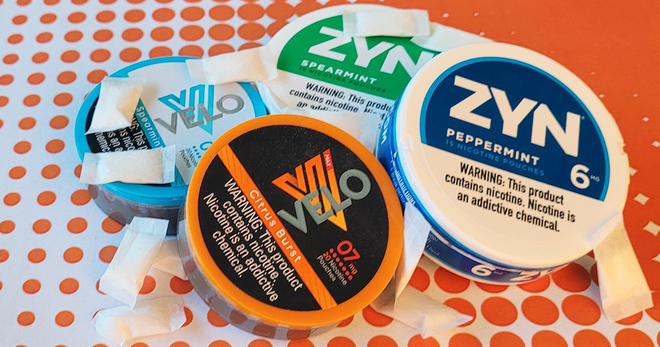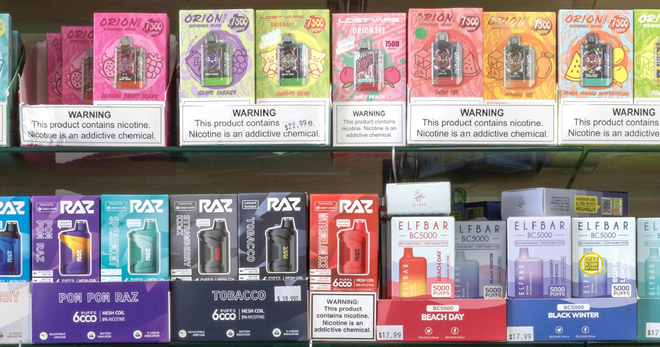Why the rise in youth e-cigarette use may be worse than we think
Data on e-cigarettes show that they are the most popular tobacco products among youth, with more than 11 percent reporting in 2016 that they currently use the devices. If that sounds concerning, consider this: there is good reason to believe that the numbers are underestimating the problem.
According to the Centers for Disease Control and Prevention and the National Youth Tobacco Survey, youth e-cigarette use increased tenfold between 2011 and 2015. This increase sounded alarms — the surgeon general declared in a 2016 report that e-cigarette use among young people “is now a major public health concern” because early e-cigarette use and nicotine addiction can harm brain development and increase the risk of young people smoking cigarettes.
But accurately measuring youth vaping is challenging because of the variety of products and their rapid growth in recent years. Survey data rely on self-reporting, and the terminology surrounding these electronic devices continues to evolve and may not be accurately captured in survey options. For example, a young person who says they “vape” or “JUUL” may not consider the products they use to be e-cigarettes, and may not report use on a survey that only uses that term. Many young people also do not know that the products they use contain nicotine, and that lack of awareness could be causing significant underestimates in reports of nicotine consumption.
63%
63 percent of JUUL users did not know that the product always contains nicotine
Terms of use: e-cigarette, vape, JUUL?
E-cigarettes can go by many names. In 2014, the New York Times reported that officials were concerned that the CDC inaccurately measured rates of e-cigarette use among young people because of survey phrasing.
“Indeed, public health officials warn that they may be misjudging the use of such products — whatever they are called — partly because of semantics,” the New York Times reported. “Many young people say they have not and will not use an e-cigarette but do say they have tried hookah pens, e-hookahs or vaping pens.”
JUUL can now be added to the list. Since the product entered the market in 2016, it has quickly amassed more than half of the e-cigarette market share and introduced new phrases for e-cigarette use. A new Truth Initiative® study published in Tobacco Control found that more than a quarter of young people recognize JUUL, a sleek e-cigarette that looks like a USB flash drive and can be easily disguised in school. Among those young people, 25 percent reported that use of the product is called "JUULing," indicating that it is so distinctive, it is perceived as its own category. Truth Initiative has recommended to the CDC that the next National Youth Tobacco Survey include “JUUL” as an e-cigarette brand example, and will make similar recommendations for all surveys on tobacco use.
Lack of awareness about nicotine
The variety and growth of e-cigarette products is also causing confusion about nicotine. Two years ago, the University of Michigan Monitoring the Future survey, which previously asked students to report whether they had vaped, started asking additional and more specific questions: had the students vaped nicotine, marijuana or just flavoring?
The results are telling. While 36 percent of 12th graders reported vaping something, only a quarter of those said they vaped nicotine. Nearly a third reported that they vaped only flavoring. These figures reveal that many youth are likely unaware or misinformed about nicotine content. Data from Nielsen indicate that 99 percent of e-cigarette products sold in 2015 at U.S. convenience stores, supermarkets, mass merchandisers and similar outlets contain nicotine.
Results from the Truth Initiative study on JUUL provide further evidence that young people are unaware of the nicotine they are consuming. The study found that 63 percent of JUUL users did not know that the product always contains nicotine, even though all types of JUUL sold on the market, including mint, mango, creme brulee and cool cucumber flavors, have nicotine in them. In fact, a single JUUL cartridge is equal in nicotine content to an entire pack of cigarettes.
The lack of labeling requirements for these products exacerbates the problem. Until August 2018, there are no labeling requirements indicating that a product contains nicotine. Additionally, the Food and Drug Administration has announced that it is delaying fully reviewing and regulating e-cigarettes until 2022. The rapid growth of the e-cigarette market, the popularity of the products with young people and lack of awareness about consuming nicotine show that FDA regulation is urgently needed now.
More in emerging tobacco products
Want support quitting? Join EX Program
By clicking JOIN, you agree to the Terms, Text Message Terms and Privacy Policy.
Msg&Data rates may apply; msgs are automated.


